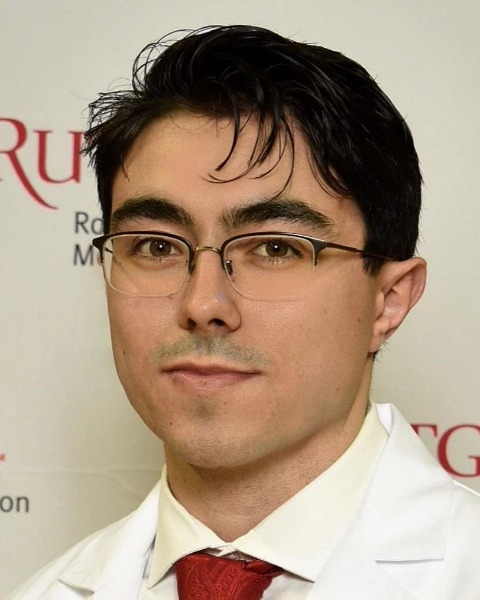Abstract Session
Abstract Session
(AS1) Connectomic Insight into Unique Stroke Patient Recovery After Rtms Treatment
Monday, April 24, 2023
10:36am - 10:44am PST
Location: Los Angeles Convention Center, 402AB

Nicholas B. Dadario, BS (he/him/his)
Medical Student
Robert Wood Johnson Medical School, Rutgers University
White Plains, New York, United States
Presenting Author(s)
Disclosure(s):
Nicholas B. Dadario, BS: No financial relationships to disclose
Introduction: An improved understanding of the neuroplastic potential of the brain has allowed advancements in neuromodulatory treatments for acute stroke patients. However, there remains a poor understanding of individual differences in treatment recovery. Individualized information of connectivity disturbances may help predict differences in treatment response and recovery phenotypes.
Methods: We retrospectively studied the medical data of 22 ischemic stroke patients who received repetitive transcranial magnetic stimulation (rTMS) treatment. Each patient underwent detailed baseline connectivity analyses to identify structural and functional connectivity disturbances. Functional and motor outcomes were assessed at baseline, 1-day after treatment, and 30-days after treatment using four validated standardized stroke outcome scales. An unsupervised machine learning agglomerative hierarchical clustering method was utilized to group patients according to outcomes at three time points to identify individual phenotypes in recovery trajectory. Clusters were then grouped based on similarity into responders and non-responders
Results: A significant improvement between three time points was demonstrated in three of four validated stroke scales utilized. Quantitative differences were found to exist in connectivity analyses between individuals, responders and non-responders uniquely differed in their structural and functional connectivity with individual parcellations in premotor areas, primary sensory area, and the ventral diencephalon.
Conclusion : This study demonstrates for the first time the feasibility of using individualized connectivity analyses in differentiating unique phenotypes in rTMS treatment responses and recovery. This personalized connectomic approach may be utilized in the future to better understand patient recovery trajectories with neuromodulatory treatment.
Methods: We retrospectively studied the medical data of 22 ischemic stroke patients who received repetitive transcranial magnetic stimulation (rTMS) treatment. Each patient underwent detailed baseline connectivity analyses to identify structural and functional connectivity disturbances. Functional and motor outcomes were assessed at baseline, 1-day after treatment, and 30-days after treatment using four validated standardized stroke outcome scales. An unsupervised machine learning agglomerative hierarchical clustering method was utilized to group patients according to outcomes at three time points to identify individual phenotypes in recovery trajectory. Clusters were then grouped based on similarity into responders and non-responders
Results: A significant improvement between three time points was demonstrated in three of four validated stroke scales utilized. Quantitative differences were found to exist in connectivity analyses between individuals, responders and non-responders uniquely differed in their structural and functional connectivity with individual parcellations in premotor areas, primary sensory area, and the ventral diencephalon.
Conclusion : This study demonstrates for the first time the feasibility of using individualized connectivity analyses in differentiating unique phenotypes in rTMS treatment responses and recovery. This personalized connectomic approach may be utilized in the future to better understand patient recovery trajectories with neuromodulatory treatment.
